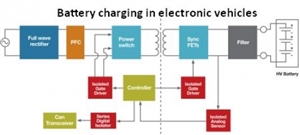Hi everyone, I have only posted once before so thanks to anyone who replies!
I am following on from the earlier "70 volt PEN conductor not allowed to exceed post", and looking into supplying a client with an electric vehicle power supply from a three phase isolating transformer BS 7671 722.413 (1.2): " The circuit shall be supplied through a fixed isolating transformer.."
The general consensus seems to be that an external IP box with an RCD (Type B) and a tethered lead is the standard to follow, and this may be the only option with a 230 volt domestic supply, but why not use a 3 phase 400 volt step down or tapped, safety double wound isolation transformer in a standard 100 -200 ampere or above industrial units/sheds?
( Subject to load and diversity).
The answer often stated when I have asked sparks/engineers is that in-rush current are too high but a type D CB BS 60898 will 'let through' the in-rush ( the transformer manufacturer agrees), and will still give at 5 seconds- (final circuit exceeding 32 A) 0.44 ohm EL ( 10oC) , so is achievable in many situations local to Birmingham.
I was then going to run a fused cable out to an external isolated IP 65 box with a Type 2 socket to IP44 or above ( 722.55.101).
Isn't it better to engineer a solution to the upcoming electric charger deluge, rather than buying (insert well known manufacturer name here), and lots of single phase loads usually dumped onto L1?
I would be interested in any thoughts or problems you may consider....

